Plants are very crafty when it comes to getting things done that they can't do on their own. Without the mobility of many other living things on Earth, a single plant can manage to breed with plants miles away and then transport itself to a new location, via a seed which was carried by a bird or wafted away on a breeze. But like I said, plants have to be pretty crafty to get all of this done.
In order to carry out the breeding, plants must intermingle their pollen. Since they can't transport the pollen on their own, they have to attract some more mobile friends - like bees, flies, birds, moths and butterflies. Many people are aware that brightly colored flowers are used for attracting some of these pollinators. But some things that fly are not attracted so much to bright colors. In fact, some flying things are attracted to some pretty disgusting things - like dung or dead bodies. Don't think the plant kingdom has overlooked these flying things. There is a nitch of plants which attract flies which feed on carrion by disguising their flowers with the perfume of a decaying body. Lovely, huh?
In fact, there are
several different families of plants that take advantage of these carrion-feeding pollinators. One group is the Amorphophallus genus from the Aroid family. Another is the Stapeliae tribe from the Apocynaceae family. These plants have a pretty good following of people who collect from the genera Stapelia, Huernia, Caralluma, Tridentea and others. Stapelia is kind of the shining star of the tribe, but I find Huernia to have some really neat species.
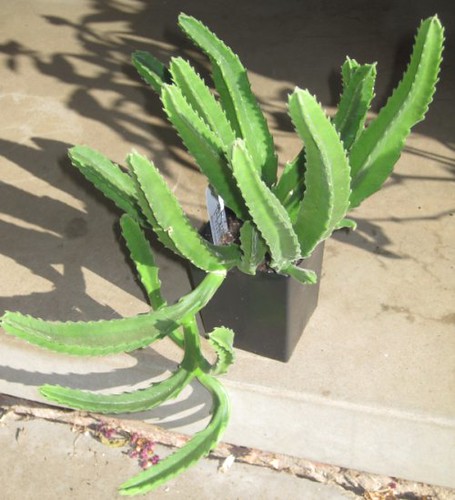 |
| Stapelia gigantea after 4 months |
I bought my first Stapelia (S. gigantea) back in April and it has been growing very rapidly this summer.
I bought 5 more plants over the last week from a couple of vendors on ebay. Here they are!
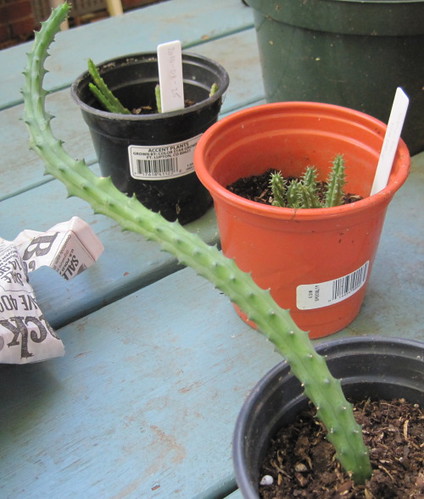 |
| Huernia aspera |
Huernia aspera is the largest plant I purchased. The others are pretty tiny starts. This plant has nice, deep red blooms that are shaped like stars, just like all plants in this tribe. These blooms are often pendulous, facing down and looking like a bell in profile.
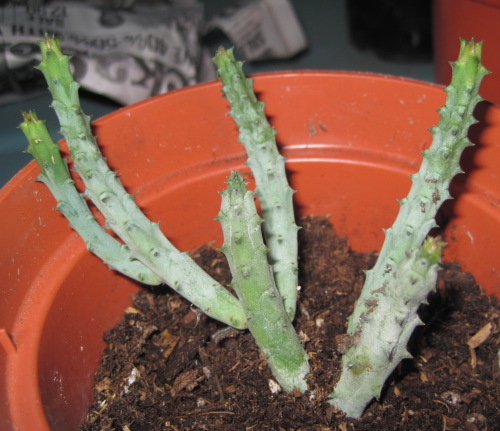 |
| Huernia penzigii |
This is the most attractive plant while not blooming, with it's silvery stems. I'm not sure about the blooms of this plant, as I've seen conflicting pictures online. I guess I'll just have to wait and see!
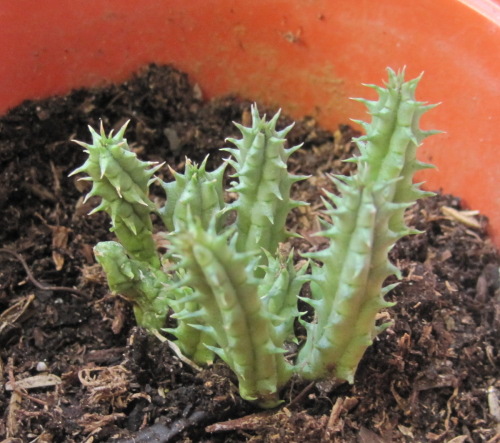 |
| Huernia longituba |
Huernia longituba has elongated blooms, as referenced in the species name. The blooms have a base color of yellow with speckling of red on the inside.
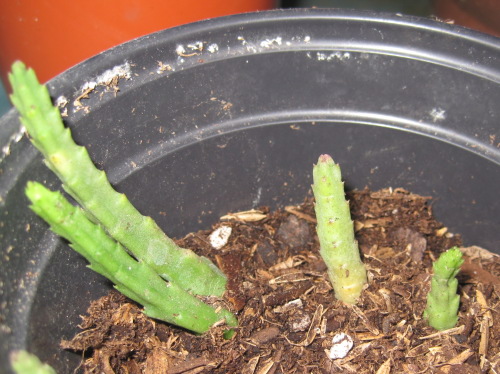 |
| Stapelia divaricata |
Stapelia divaricata has very weird blooms that look like rubbery pale pink or yellow starfish.
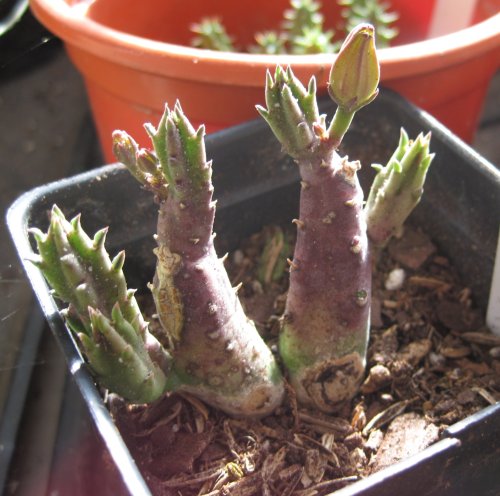 |
| Stapelia flavopurpurea - with a flower bud. |
Stapelia flavopurpurea has really cool, petite blooms that almost have a touch of Passionflower-flare to them. The plant I purchases has a bud on it. I'm hoping it will open, but I wouldn't be totally surprised if it doesn't since it just went through a couple of days in a shipping box.
These plants are succulents primarily found in southern and eastern Africa, including some from Ethiopia! They like to be pretty dry and they don't at all mind the heat we've been having lately. With a little luck and a couple of seasons, I hope to be able to bring all of these to bloom.






Interesting...I believe I had one of the types of succulents, but not sure. That is really interesting that one comes from Ethiopia. :)
ReplyDelete